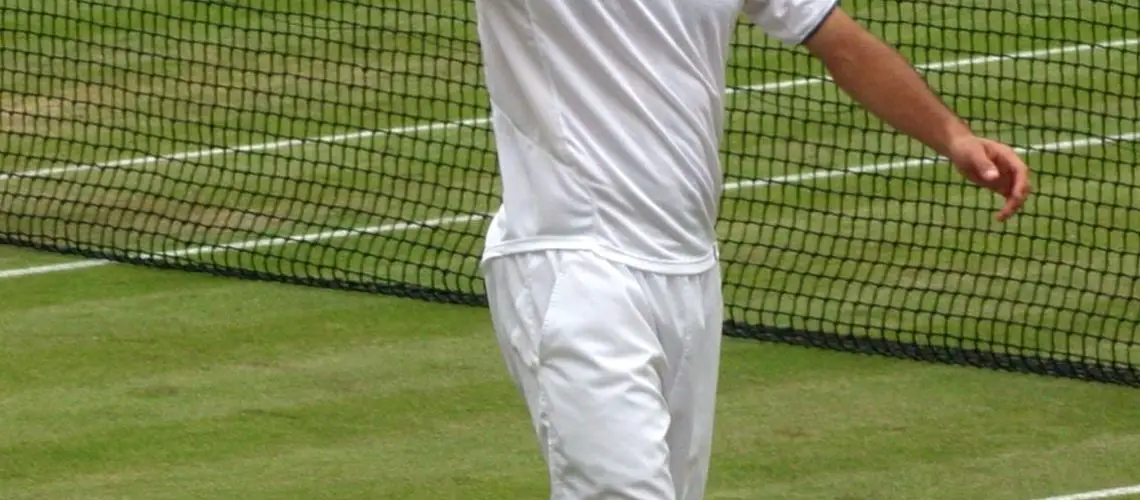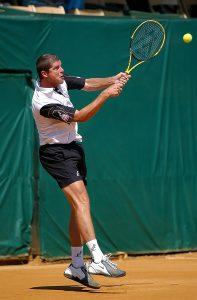We may earn money or products from the companies mentioned in this post.
Introduction
Knee pain is a common ailment experienced by tennis players, often caused by the repetitive and high-impact movements involved in the sport This blog post aims to provide a comprehensive guide on how to effectively treat knee pain specifically related to tennis By understanding the causes, recognizing common symptoms, and prioritizing proper treatment, players can alleviate discomfort and prevent further injury
Causes and Common Symptoms
When it comes to knee pain from playing tennis, there are several potential causes One of the most prevalent is overuse, which occurs when the knee joint undergoes excessive strain due to repeated motions like running, jumping, or pivoting on the court Another common cause is improper technique or form while performing various strokes and movements during gameplay
The symptoms of knee pain can vary depending on the underlying cause but often include swelling, tenderness around the joint, stiffness, and a dull or sharp ache Some individuals may experience difficulty bearing weight on the affected leg or notice a popping sensation when moving their knee
Importance of Proper Treatment
Proper treatment for knee pain from tennis is crucial as neglecting it can lead to long-term consequences that may hinder one’s ability to participate in their favorite sport Ignoring symptoms or pushing through the pain can exacerbate existing injuries and potentially result in more severe damage over time
By seeking appropriate treatment early on, players can address any underlying issues causing their knee pain and implement strategies to reduce discomfort while improving overall joint health This includes rest, icing the affected area, using compression techniques like braces or wraps for support, and engaging in targeted exercises designed to strengthen surrounding muscles
Aim of the Blog Post
The aim of this blog post is to serve as a comprehensive guide for tennis players experiencing knee pain Whether you’re an avid competitor or enjoy casual matches with friends, understanding how to properly treat your knees can significantly impact your performance on the court
Throughout this article, we will delve into various treatment methods, including self-care techniques, physical therapy exercises, and professional medical interventions By offering a range of options, readers can choose the approach that suits their individual needs and take proactive steps towards alleviating knee pain and getting back in the game
In conclusion, this blog post aims to provide valuable insights and practical advice for tennis players struggling with knee pain By addressing the causes, recognizing common symptoms, emphasizing the importance of proper treatment, and outlining a comprehensive guide for recovery, players can effectively manage their condition and continue enjoying their favorite sport without unnecessary discomfort or risk of further injury So let’s dive in and explore the world of tennis knee pain treatment together!
Identifying and Understanding Knee Pain from Tennis

Tennis is a physically demanding sport that puts significant strain on the knees It’s important for players to be aware of the types of knee injuries commonly associated with tennis, as well as the risk factors and symptoms to look out for
Types of Knee Injuries Related to Tennis
-
Runner’s knee (patellofemoral pain syndrome):
This condition causes pain around the kneecap area and is often caused by overuse or improper tracking of the patella -
Jumper’s knee (patellar tendonitis):
Common among tennis players who frequently jump or land forcefully, this injury involves inflammation in the patellar tendon -
Meniscus tears:
The meniscus is a cartilage cushion in the knee joint Tears can occur due to sudden twisting movements or repetitive stress on the knee -
Ligament injuries (ACL, MCL, LCL, PCL):
Ligament injuries are typically more severe and can result from sudden stops, changes in direction, or impact during play
Common Risk Factors for Developing Knee Pain in Tennis Players
-
Overuse or excessive training:
Pushing your body beyond its limits without proper rest can lead to increased stress on the knees and potential injury -
Poor technique or form:
Incorrect movement patterns or biomechanics during strokes can place unnecessary strain on the knees -
Improper footwear:
Wearing shoes that don’t provide adequate support or stability can contribute to knee pain and injuries
Recognizing the Signs and Symptoms
-
Painful sensations around the kneecap area:
This can range from a dull ache to sharp, intense pain -
Swelling or inflammation:
The knee may feel swollen, tender, or warm to the touch -
Limited range of motion:
Difficulty fully bending or straightening the knee can indicate an underlying issue
III: Preventive Measures and Conservative Treatments for Knee Pain from Tennis

Taking steps to prevent knee pain before it occurs is crucial for tennis players Here are some precautions and treatment options to consider:
A: Precautions to Take Before Playing
-
Warming up properly:
Engage in dynamic stretches and light exercises to prepare your muscles for activity -
Strengthening exercises targeting specific muscles:
Focus on building strength in the quadriceps, hamstrings, and hip abductors to support the knees during play
B: Modifying Playing Techniques
-
Proper footwork:
Mastering correct footwork techniques can help reduce strain on the knees and promote better balance on the court -
Appropriate court surface choice:
Different court surfaces have varying impact levels Choosing a surface that suits your body’s capabilities can minimize stress on your knees -
Use correct racket size and string tension:
Ensuring your equipment is suitable for your playing style can help prevent unnecessary strain on your joints
C: Conservative Treatments for Minor Injuries
-
The RICE method – Rest, Ice, Compression, Elevation:
This approach can help reduce pain and inflammation in the early stages of a minor injury -
Anti-inflammatory medications:
Nonsteroidal anti-inflammatory drugs (NSAIDs) may be recommended to alleviate pain and reduce swelling -
Gradual return to activity:
Once the initial pain subsides, gradually reintroduce tennis activities while monitoring any discomfort or limitations
IV: Seeking Professional Help for Severe Cases

In severe cases or when conservative treatments don’t provide relief, it’s important to consult with a medical professional They can provide further guidance and recommend appropriate therapies or surgical interventions if necessary
A: When to Consult a Medical Professional
-
Persistent or worsening pain:
If knee pain continues despite rest and conservative measures, it’s crucial to seek medical advice for proper evaluation and diagnosis -
Inability to bear weight on the affected knee:
Difficulty putting weight on the knee could indicate a more serious injury that requires immediate attention
B: Types of Therapy and Treatments
-
Physical therapy:
A structured rehabilitation program supervised by a physical therapist can aid in strengthening the muscles around the knee joint and improving mobility -
Supportive devices (knee braces, tape, etc):
These external aids can provide additional stability and support during activities while promoting proper alignment of the knee joint -
Corticosteroid injections:
In some cases, corticosteroid injections may be used to reduce inflammation and alleviate pain in the knee
C: Surgical Interventions for Severe Injuries
-
Arthroscopic surgery:
This minimally invasive procedure allows surgeons to visualize and treat various knee conditions, such as meniscus tears or cartilage damage -
Ligament reconstruction (ACL, MCL, LCL, PCL):
Severe ligament injuries often require surgical reconstruction using grafts to restore stability to the knee joint -
Meniscus repair or removal:
Depending on the severity of a meniscus tear, surgical intervention may involve repairing the damaged tissue or removing a portion of it
D: Post-Surgical Rehabilitation and Recovery
-
Physical therapy exercises and stretching:
Following surgery, a comprehensive rehabilitation program will focus on regaining strength, flexibility, and function in the knee joint -
Gradual return to sports activity with proper guidance:
It’s important to follow a structured plan created by your medical team to safely reintroduce tennis activities after surgery
Knee pain can significantly impact a tennis player’s performance and overall well-being By understanding the different types of injuries, taking preventive measures, and seeking appropriate treatment when needed, players can minimize their risk of developing knee pain and maintain optimal health on and off the court
Conclusion

After exploring the various aspects of tennis and its impact on one’s health, it is clear that proper treatment and prevention strategies are crucial for maintaining a long and successful career in this sport By prioritizing your physical well-being and taking proactive measures to prevent injuries, you can significantly enhance your performance on the court
A Recap of the Main Points Discussed
Throughout this blog post, we have touched upon several key factors that contribute to a healthy tennis career:
-
Physical Conditioning:
Regular exercise, strength training, and flexibility exercises are essential for building endurance, preventing injuries, and improving overall performance -
Injury Prevention:
Proper warm-up routines, wearing appropriate gear, using correct techniques, and listening to your body’s warning signs can help reduce the risk of common tennis injuries -
Nutrition:
A well-balanced diet rich in nutrients such as proteins, carbohydrates, healthy fats, vitamins, and minerals is vital for sustaining energy levels during matches and aiding in recovery -
Mental Well-being:
Tennis players should prioritize mental health by managing stress levels effectively through relaxation techniques or seeking professional support when needed This ensures focus and resilience during intense competition -
Injury Treatments:
Seeking timely medical attention from qualified professionals is crucial to address any injuries promptly Following recommended treatment plans diligently helps prevent further damage or complications
The Importance of Proper Treatment and Prevention
To maintain a successful tennis career over the long term, it is imperative to prioritize proper treatment and prevention strategies Neglecting these aspects not only puts your immediate wellbeing at risk but also jeopardizes your future in the sport
By investing in regular check-ups with sports medicine professionals, you can identify and address any underlying issues before they escalate into more significant problems Working closely with trainers and coaches who emphasize injury prevention techniques allows you to develop a comprehensive training program tailored to your needs
Remember, an ounce of prevention is worth a pound of cure Taking proactive steps to protect your body and mind will help ensure that you can enjoy the game you love for years to come
Useful Links

How Playing Tennis Causes Knee Pain?
Doctor’s Tips for Tennis Players: Knee Health
Tennis Knee | Brighton Physio Clinic
3 Most Common Tennis Injuries and How to Prevent Them
Knee Pain After Exercise
Knee Injury – Tennis Injuries
TENNIS FITNESS – The 1 Stretch to Prevent Knee Pain
Racquet Sports – How To Ace Knee Pain On The Court
Tennis Injury Prevention: Treating Patellarfemoral Pain in …
Best Tennis Shoes For Knee Pain
Tennis Knee Workout
Knee pain: Symptom When to see a doctor
Tennis elbow, swimmer’s shoulder, and runner’s knee
Common Tennis Knee And Foot Injuries | How To Avoid …
Tips to avoid and treat tennis injuries
Adolescent Anterior Knee Pain – OrthoInfo – AAOS
Common tennis injuries and how to treat them
Tennis Safety
The Best Ways to Treat, Prevent Tendonitis – URMC
The 9 Best Tennis Shoes for Knee Pain






